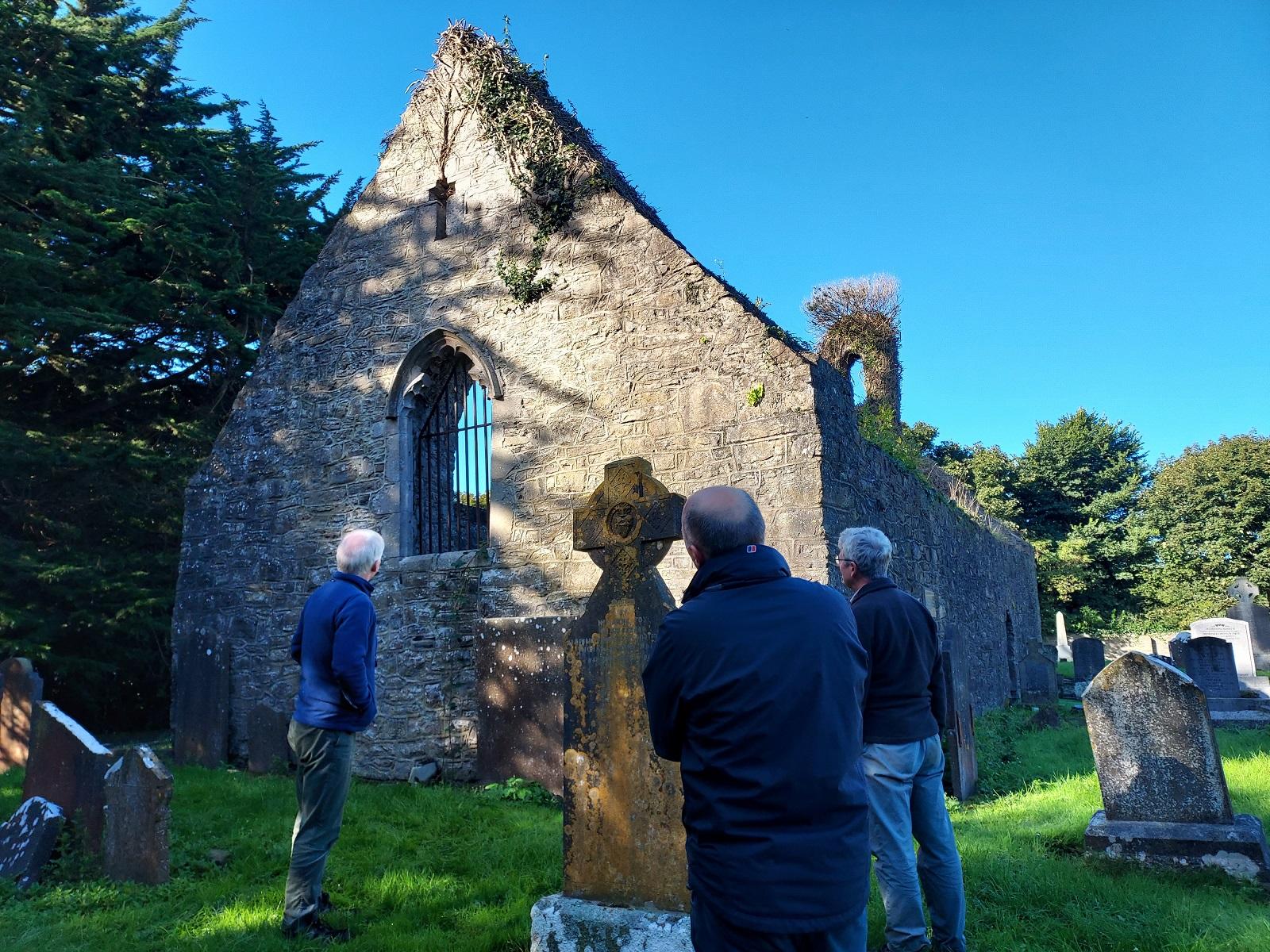The Community Monuments Fund
The Community Monuments Fund was first established by the Department of Housing, Local Government and Heritage July, 2020, when an allocation of €1.4 million for expenditure on improvements to archaeological monuments was announced. Funding increased to just over €4 million in 2021 and to €6 million in 2022.
The main aims of the Community Monuments Fund are the conservation, maintenance, protection and promotion of local monuments and historic sites. It has a number of funding streams aimed at enabling conservation works to be carried out on monuments which are deemed to be significant and in need of urgent support, encouraging access to monuments and improve their presentation and also to build resilience in monuments to enable them to withstand the effects of climate change.
The Community Monuments Fund invests essential capital in our valuable archaeological heritage and helps owners and custodians of archaeological monuments to safeguard them into the future for the benefit of communities and the public. The fund is administered by the Fingal Heritage Office for the National Monuments Service, Department of Housing, Local Government and Heritage.
Fingal Projects:
2022
Six locations of archaeological heritage in Fingal will share a total of €391,648 from the Community Monuments Fund 2022 to aid with their works and survey programmes.
Stream 1 (Consolidation works):
- Rush Tower House €85,000
- St Catherine’s Church, Kenure €85,000
- St Marnock’s Church, Portmarnock €85,000
- St Columba’s Church & Round tower Swords €85,000
Stream 2 (Survey and Conservation Plans)
- Moat Wood, Naul €30,000
- Balrothery Tower House €21,648
2021
Fingal Projects awarded €270,000 in 2021 Community Monuments Fund
Donabate Portrane Archaeological Audit (€2,826.45)
The Donabate-Portane peninsula contains disparate recorded monuments from sub-surface enclosures, holy wells, churches and graveyards to tower houses, harbours and tidal mills that require a holistic approach to interpretation. The maritime and coastal heritage is also notable as is the industrial, cultural, historic demesne and architectural heritage with disparate assets from Harry Clarke windows in the church in Donabate to the coastal Martello towers. All recorded archaeological sites were inspected by an archaeologists from Trim Archaeological Projects Ltd. to assess the current condition and accessibility and landscape characteristics of the site; to establish their suitability for interpretation and produce a gazetteer of this information to feed into the Donabate Portane Heritage Audit.
Read Report and Inventory of the Archaeological Assets of the Portrane-Donabate Peninsula link archaeological audit report here
Photo: Portrane, courtesy of TAP Ltd.
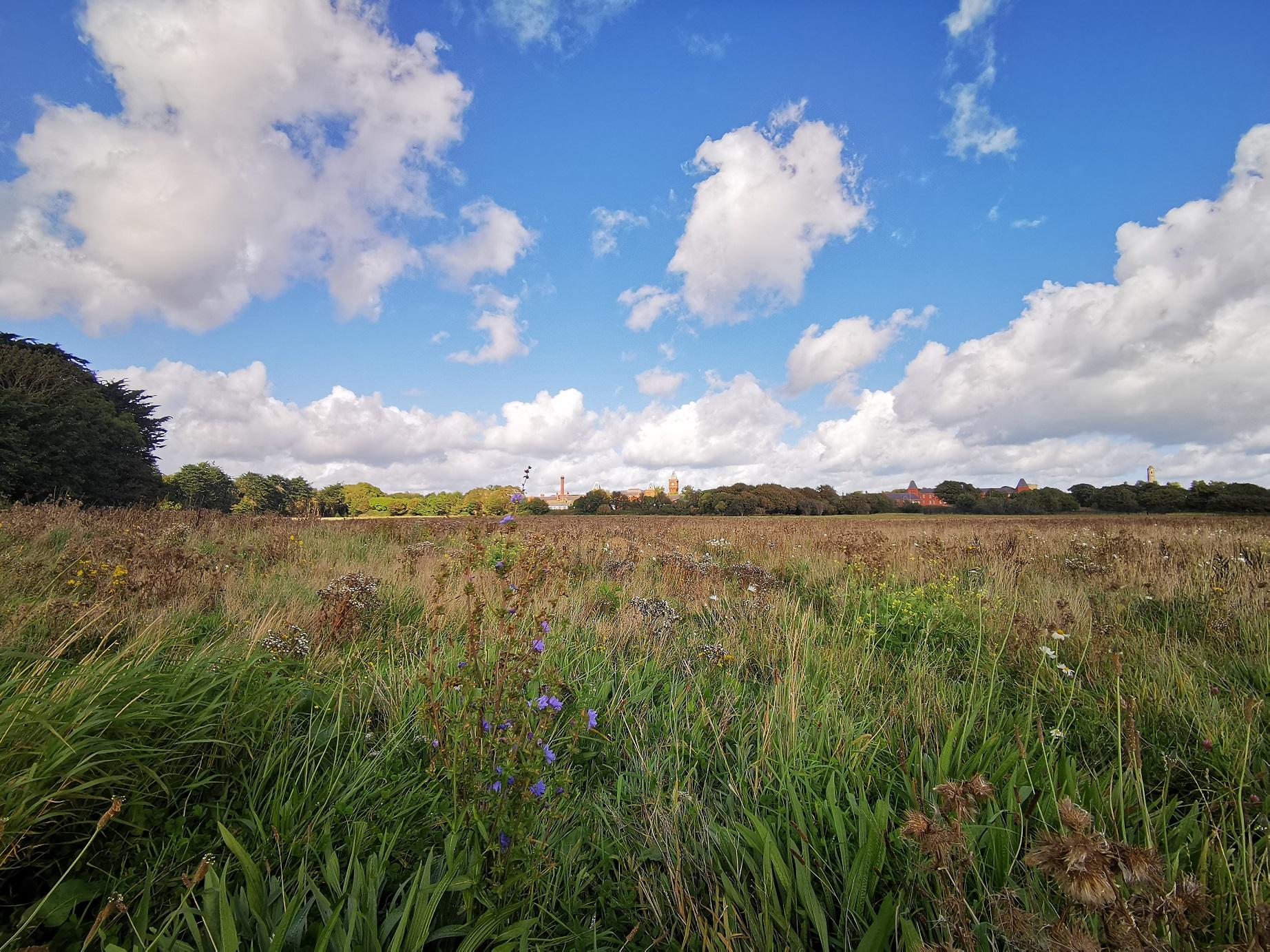
Castleknock Castle Works (€85,000)
Located on the summit of an enormous earthwork identified as the late prehistoric Cnucha in the Dinshenachas poems, Castleknock castle (DU017-12002-) was considered to be the chief stronghold in the vicinity of Dublin at the time of the Anglo-Norman invasion. It was granted to Hugh Tyrell in 1173 and remained in the hands of the Tyrells for eight generations with a brief interruption when Edward Bruce took the castle in 1316. Reputedly the first stone castle built in Ireland, its polygonal keep is one of only three certain examples of its kind in Ireland-the others being Athlone and Shanid. All three are related to the late 12th century donjons of similar plan in France and England.
CMF 2021 works with a multidisciplinary team concentrated on the fabric of the keep and consisted of the completion of the lime mortar and stone capping of the top of the wall of the keep and the replacement of the steel supports for first floor passageway lintels with masonry and new steel supports. Summit Conservation and Restoration Ltd undertook the works overseen by project team; Kieron Broderick (project manager); Dermot Nolan (conservation engineer); Alan Hayden (archaeologist), Basil Conroy (QS). The project was supported by the Vincentian Order and Fingal County Council.
The 1st Year students of Castleknock College have produced a video to foster an increased awareness and appreciation of the monument-available to view here https://youtu.be/27ZtE4UYMQk
Photo: Castleknock Castle, view from the keep
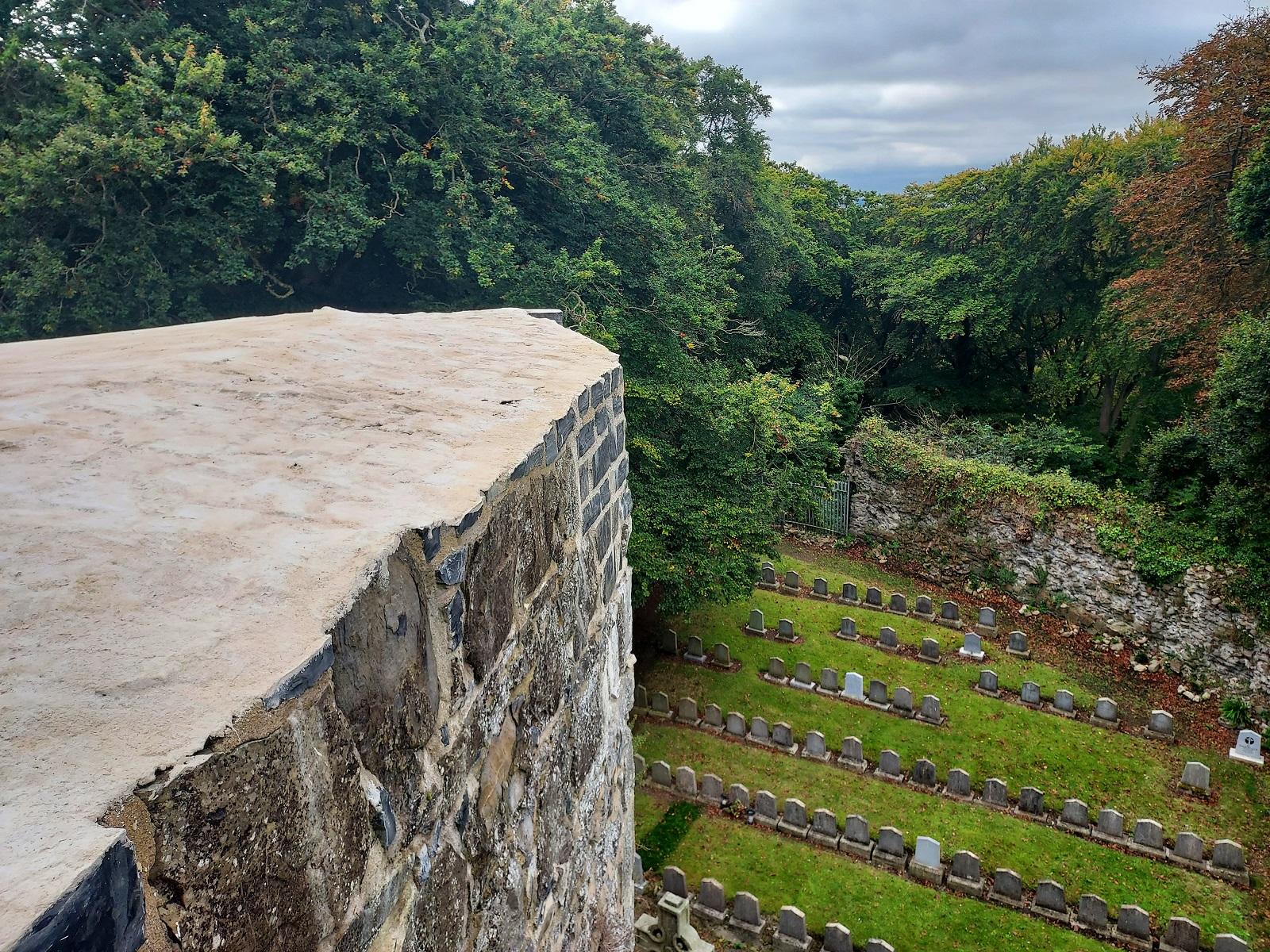
Kilsallaghan Graveyard Works (€42,778.24)
The wall of Kilsallaghan graveyard (DU011-011002) collapsed after heavy rains following harsh winters-an example of the cumulative effects of climate on our built heritage. In 1197 St. David's church was gifted to St Thomas' Abbey in Dublin. However, there are traces of a flat wide embankment outside the graveyard wall which are probably the remains of an ecclesiastical enclosure, suggesting a pre-Norman date for this site. The raised graveyard is sub-rectangular in plan with the modern church building in the centre. The collapsed wall was rebuilt and a bulge in the other retaining wall repaired. Works were carried out under archaeological supervision and a small number of bone fragments recovered and analysed. The bones were from at least one adult and juvenile no more than a few centuries old. ClanCon Ltd undertook the works overseen by project team; Alistair Goodwin (Architect); Lisa Edden, CORA (Conservation Engineer); Eoin Halpin (Archaeologist).
Photo: Repaired graveyard wall, Kilsallaghan
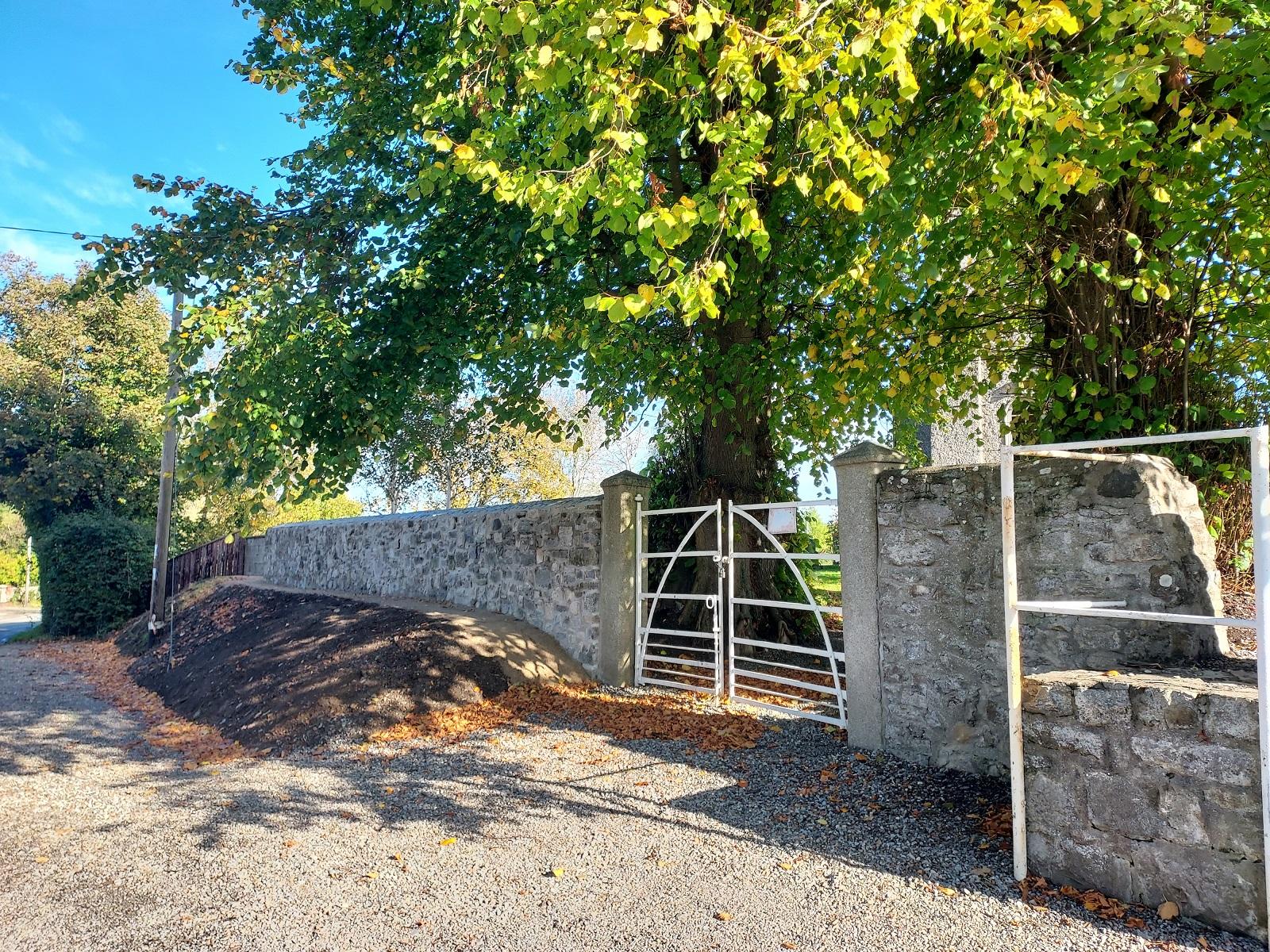
Burial site, Windmill Lands, Swords Works (€40,222)
Works were undertaken to protect the burial site (DU011-090) from bank erosion and climate change, within the Ward River Valley Park. Located on the banks of the meandering River Ward within sight of the ecclesiastical centre of St Colmcille and the medieval high street of Swords the site was unknown prior to when a human skull was exposed in the bank. Six individuals were excavated (Licence No. 99E0554). Further erosion of the river bank led to locals spotting another exposed skeleton in 2020. Excavation revealed a juvenile skeleton aged between 9-11 years at time of death. A radiocarbon date of 1045-1225calAD (UBA-43540, 883±29 BP (McCormick link archaeology report here). To prevent future erosion and exposure of burials, and following consultation with Inland Fisheries Ireland boulders were carefully laid under archaeological supervision. The site is now protected from flooding and will form part of the overall interpretation of the ward River Valley Park. Works were undertaken by Integrated Utility Services and overseen by Trim Archaeological Projects Ltd (O’Carroll link archaeology monitoring report here). and Fingal County Council.
Photo: Ward River Valley Excavations, courtesy of Archer Heritage Ltd.
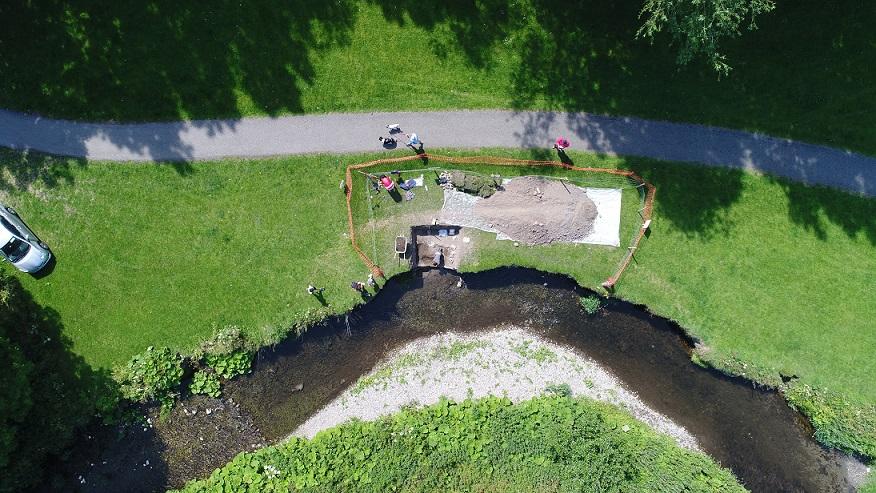
Malahide Church Survey (€30,000)
Malahide Church and Graveyard (DU012-031) is centrally located in the historic complex of castle, courtyards, gardens and wider parkland of Malahide Castle Demesne. Approximately 600,000 visitors come to Malahide Demesne annually, most of them passing by and around the Abbey. As a visual centrepiece of the larger heritage site its location presents an opportunity to interpret and encourage interest in the ‘Abbey’ and Graveyard for a large number of the visiting public. The recording survey and the condition report are the first steps in arresting the erosion and structural threats to the monument, building in resilience to and sustaining Malahide Abbey and graveyard for the future. View survey here https://bsdata.blob.core.windows.net/dashboards/J6NK4OZFJ0/index.html
Photo: Interior Malahide Demesne Church
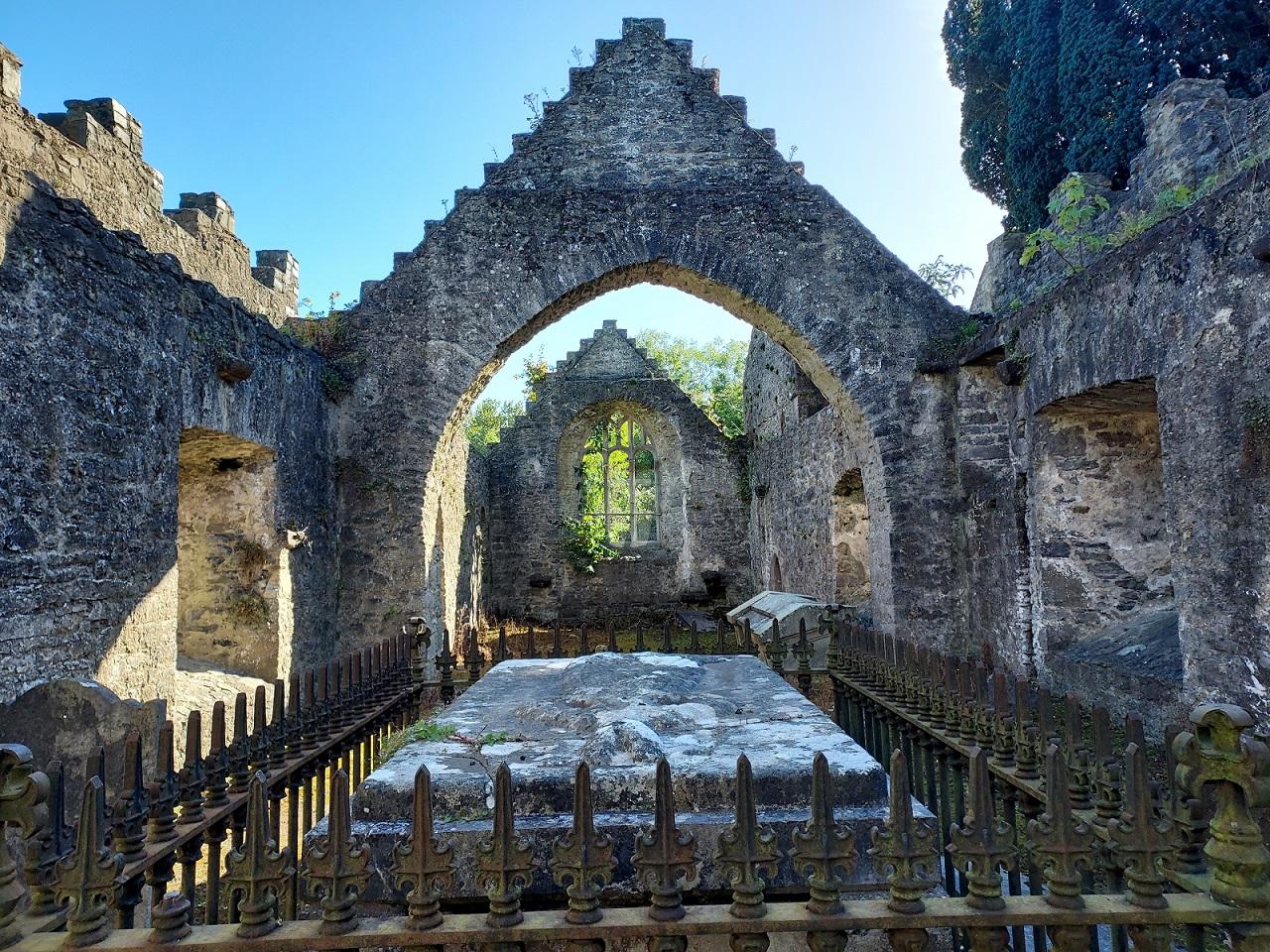
St Columba’s Towers Survey, Swords (€30,000)
The St Columba’s complex is highly significant site evolving from its 6th century foundation to the present day. Associated with the monastic enclosure the round tower or cloig teach is probably 10th century in date. It rises to four storeys. The belfry tower is a surviving element from the later medieval period. Both towers were cleared of pigeon dirt and wire mesh attached to window opening to prevent further pigeon deposits. At least 1m of guano was removed from the round tower under archaeological supervision to reveal its use as an ash pit. An external drone survey was undertaken, a structural condition report and an historical context report. By assessing the structural problems and outlining the measures to deal with them, the surveys will help to prevent deterioration and protect the monuments into the future and places the site in the national and local context, adding to the body of knowledge about the site and its significance. The multi-disciplinary team included Conservation Architect Margaret Quinlan; Conservation Engineers DKP Ltd.; Trim Archaeological Projects and Dr Rachel Moss.
Photo: St Columba's round tower courtesy of Trim Archaeological Projects
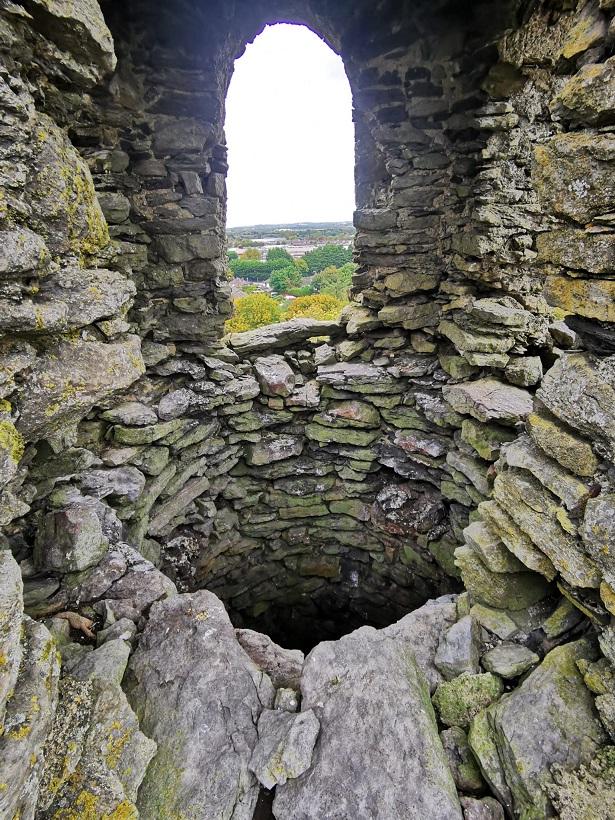
Lanistown Castle, Donabate and St Marnock’s Church Portmarnock Surveys (€30,000)
Lanistown Castle (DU012-004-) is a 15th century tower house located near the entrance to Newbridge Demesne. It was probably built by the de Bathe family who were granted the manor of Lanestown in 1376 and held it for several generations. Inaccessible for over a decade significant vegetation had to be removed to allow for a measured survey to take place. St Marnock’s Church is a late medieval church (DU015-00701) in Portmarnock. Both monuments have been identified as priorities for conservation works by Fingal’s Monuments at Risk team. The vegetation removal, survey and condition reports funded by the Community Monuments Fund 2021 will inform future works to consolidate the structures and create resilience in the face of climate change.
Lanistown Castle survey here https://bsdata.blob.core.windows.net/dashboards/IOFOUE3K49/index.html
Photo: Lanistown Castle, Newbridge Demesne
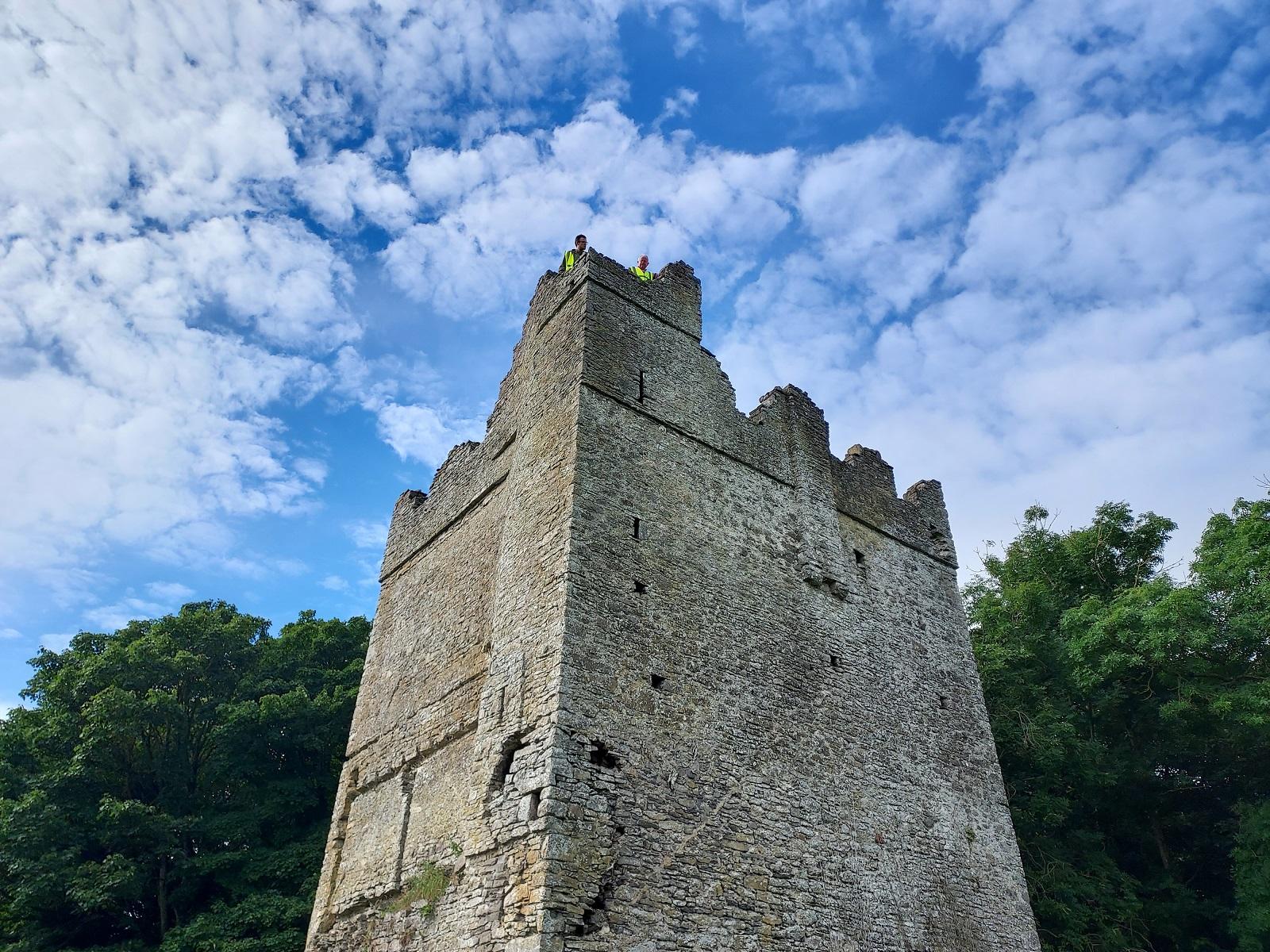
St Catherine’s Church and Rush Tower House Survey (€30,000)
The medieval St Catherine’s Church (DU008-00401) and the 15th century Rush tower house (DU008-003--) are located in part of medieval manor vested in the Earl of Ormond from the time of Edward 1st until 1641. The monuments are now either side of the road into St Catherine’s housing estate. Vegetation was removed from Rush Tower house and the site was surveyed. Both church and tower house have had condition surveys carried out and the survey and engineering specifications will inform future stages of works.
Rush Tower House survey here https://bsdata.blob.core.windows.net/dashboards/2EZKILAWLH/index.html
Photo: St Catherine’s Church, Rush
